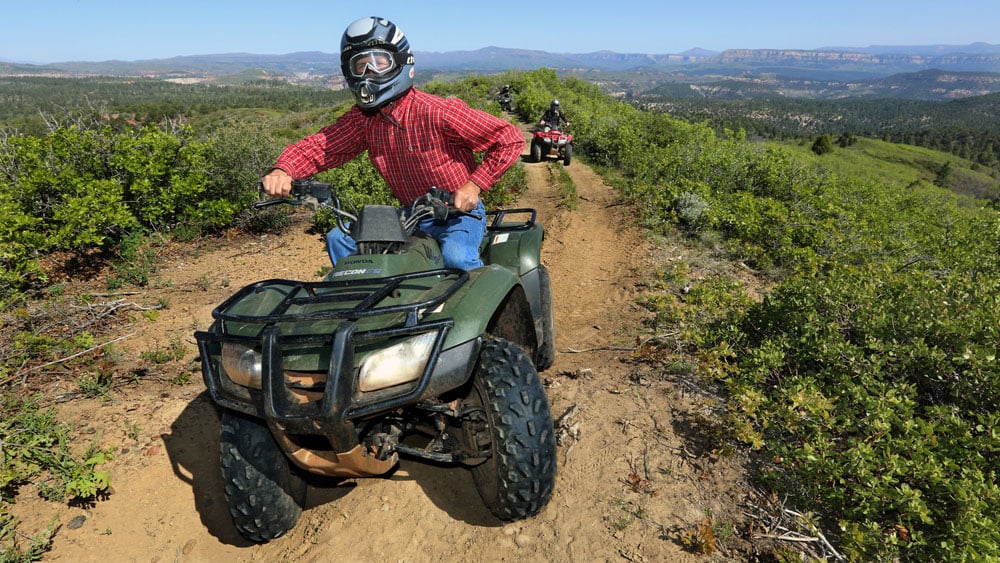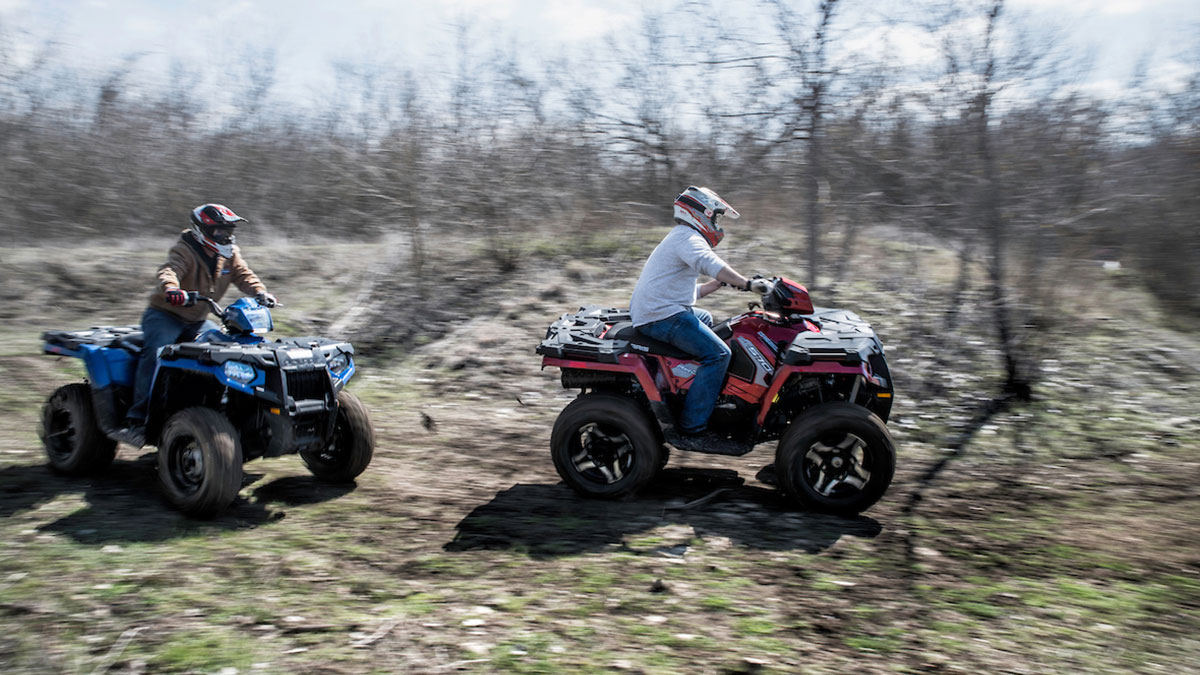ATV Riding Strategies: Grasping the Art of Off-Roading

Body Positioning
To successfully navigate with challenging off-road surface, it is essential for ATV cyclists to regularly maintain appropriate body positioning. Preserving the correct body setting while riding an ATV not only improves control and security however additionally guarantees the motorcyclist's safety and security. By embracing the right body positioning methods, riders can efficiently disperse their weight, improve their balance, and reduce the risk of injuries or accidents.
Putting the feet on the foot secures allows the cyclist to keep security and control over the ATV. The rider's knees must be a little curved, offering a minor suspension to take in shocks and keep balance.
Moreover, the cyclist's eyes should constantly be concentrated ahead, checking the terrain and expecting any challenges or changes in the trail. By keeping an onward gaze, bikers can make split-second decisions and react properly to testing surface.
Throttle Control
Structure upon the significance of proper body placing for ATV cyclists, understanding throttle control is a crucial skill that allows riders to effectively steer with various off-road surfaces. Throttle control describes the capability to regulate the quantity of power delivered to the ATV's engine. By understanding how to adjust the throttle, riders can make certain a regulated and smooth velocity, permitting them to navigate obstacles with accuracy.
Sudden or jerky motions can create the ATV to lose grip or come to be unstable, making it hard to keep control. This method enables the ATV to maintain a steady speed and gives better traction, decreasing the risk of mishaps.
In addition to smooth modulation, motorcyclists must also discover just how to balance the throttle with other riding techniques, such as body positioning and braking. When climbing steep hills, riders need to use adequate throttle to keep momentum without triggering or overpowering the atv wheel spin. Likewise, when descending steep slopes, riders should make use of the throttle in mix with correct body placing and braking to keep control and stop the ATV from moving or tipping over.

Braking Strategies
A vital element of ATV riding techniques is mastering reliable braking techniques. It is essential to bear in mind that extreme stopping with just the front brake can trigger the ATV to pitch forward, potentially leading to loss of control or even turning over. By understanding these braking methods, you can enhance your ATV riding abilities and guarantee a delightful and safe off-roading experience.
Cornering Strategies
One important element of mastering ATV riding methods is recognizing effective cornering strategies. Cornering on an ATV can be difficult, yet with the best strategies, riders can browse turns securely and efficiently. The key to effective cornering is to keep control of the ATV while maximizing traction and lessening the threat of tipping over.
To carry out a correct cornering technique, motorcyclists need to approach the turn at an ideal rate, guaranteeing they are not going also slow or too quick. It is critical to shift the body weight towards the within of the turn, leaning into it to preserve equilibrium and security. This aids to counterbalance the centrifugal force and keeps the ATV upright.
Furthermore, motorcyclists need to maintain their eyes concentrated my website on the exit point of the turn instead of the immediate path ahead (ATV). This enables for smoother and a lot more specific guiding, as it helps the motorcyclist prepare for any type of barriers or changes in terrain
In addition, proper throttle control plays a considerable duty in cornering. Riders have to regulate the throttle smoothly, avoiding unexpected velocities or slowdowns, which can cause loss of control.
Uphill and Downhill Riding
When navigating off-road terrain, ATV motorcyclists have to master the techniques for uphill and downhill riding to preserve control and make navigate to this website certain safety and security. Uphill riding requires a mix of equilibrium, throttle control, and weight circulation. As cyclists rose high slopes, they ought to lean ahead to move their weight in the direction of the front of the ATV, which boosts traction on the front wheels and avoids the automobile from turning backwards. ATV. In addition, keeping a regular throttle and avoiding sudden velocity or slowdown assists to prevent the ATV from losing energy or obtaining stuck. Downhill riding, on the various other hand, needs bikers to lean back and shift their weight towards the back of the ATV. This aids to preserve security and prevent the vehicle from flipping ahead. It is critical to make use of the brakes moderately and apply them gradually to avoid locking the wheels and blowing up. Additionally, riders must pick the path with the least challenges, as navigating downhill can be much more difficult due to the boosted speed and minimized traction. By mastering the strategies for uphill and downhill riding, ATV riders can with confidence take on various off-road surfaces and enjoy a thrilling and secure adventure.
Final Thought
Finally, mastering the art of ATV riding calls for a combination of body positioning, throttle navigate to this site control, stopping methods, and efficient cornering. Uphill and downhill riding also require details abilities to navigate safely. By carrying out these techniques, cyclists can enhance their off-roading experience and improve their overall control and security on the ATV.
ATV Riding Techniques: Grasping the Art of Off-Roading is a comprehensive overview that digs right into the complexities of understanding the abilities required for off-road ATV riding. Whether you are a beginner or a skilled biker, ATV Riding Techniques: Understanding the Art of Off-Roading uses essential suggestions to assist raise your off-road ATV riding abilities to the following level.
